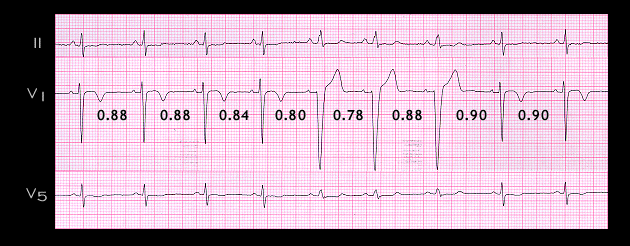
The three wide complex beats in this tracing are also examples of intermittent rate dependent left bundle branch block. In this case, the first wide complex beat occurs because of the gradual shortening of the RR interval that is associated with sinus arrhythmia. The left bundle branch block occurs when the RR interval shortens to less that 0.80 seconds but does not dissipate until the RR interval has lengthened to 0.90 seconds. The observation that the bundle branch block “turns off” at a slower rate than it “turns on” is characteristic of rate dependent bundle branch block and occurs because the delayed activation of the “blocked” portion of the conduction system requires greater slowing of the rate to permit it to regain its excitability.
